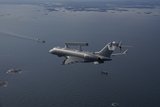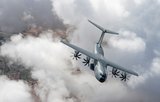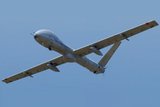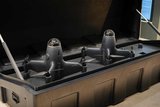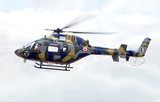US budget boosts Boeing’s F-15EX with $3.1 billion investment to increase fleet to 129
The ninth F-15EX Eagle II was delivered to the 142nd Fighter Wing of the Oregon National Guard in May 2025. (Photo: USAF)
Boeing’s F-15EX Eagle II aircraft could receive a huge funding boost from the US Department of Defense of US$3.1 billion in the proposed FY2026 defence budget.
The budget is part of the added $150 billion reconciliation legislation – which was previously outlined in May – to modernise the US military from 2025 to 2029. The total proposed defence budget stands at $1 trillion with $301 billion segmented for the US Air Force (USAF).
“The proposed budget reflects the US Department of Defense’s ongoing commitment to modernising the USAF's tactical airpower capabilities,” the Pentagon said in a statement.
“The F-15EX will
Already have an account? Log in
Want to keep reading this article?
More from Air Warfare
-
![Singapore’s Hermes 900 buy to enhance multi-domain ISR capabilities]()
Singapore’s Hermes 900 buy to enhance multi-domain ISR capabilities
Drawing on its endurance and substantial payload capacity, the Hermes 900 would provide a boost to Singapore’s ISR capabilities, particularly in the maritime domain.
-
![Dubai Airshow 2025: GA-ASI’s MQ-9B racks up new milestones with AEW demo planned]()
Dubai Airshow 2025: GA-ASI’s MQ-9B racks up new milestones with AEW demo planned
The company announced its demonstration timeline while confirming the MQ-9B had completed the platform’s third lifetime test.
-
![Dubai Airshow 2025: Edge Group eyes international market expansion, unveils new UAVs]()
Dubai Airshow 2025: Edge Group eyes international market expansion, unveils new UAVs
The UAV portfolio expansion comes in the wake of the Edge-Anduril joint venture announced ahead of the airshow.
-
![India reopens hunt for reconnaissance and surveillance helicopters]()
India reopens hunt for reconnaissance and surveillance helicopters
The extended deadline for vendors highlights the complexity of the procurement for India, with numerous vendors positioning themselves for the programme.
-
![Dubai Airshow 2025: Lockheed’s AGM-158 XR flight tests planned for 2026]()
Dubai Airshow 2025: Lockheed’s AGM-158 XR flight tests planned for 2026
The AGM-158 XR, which started as a Lockheed Martin internal investment, was first unveiled in September 2024.








